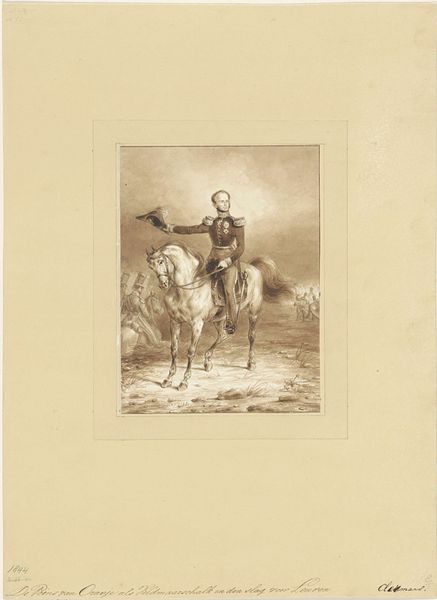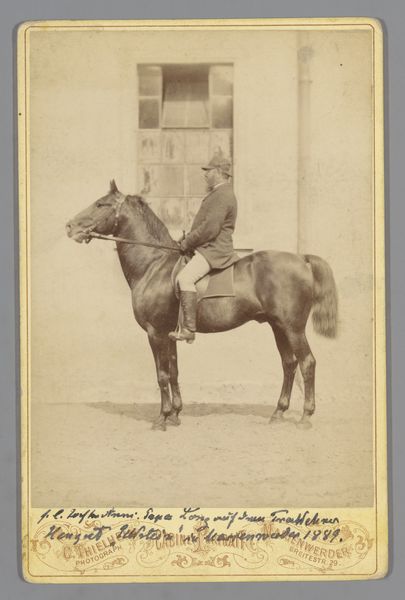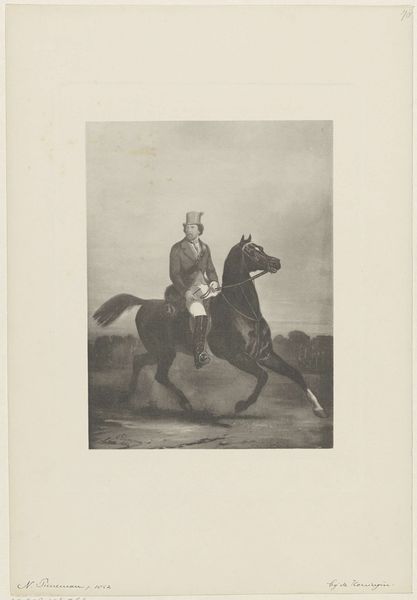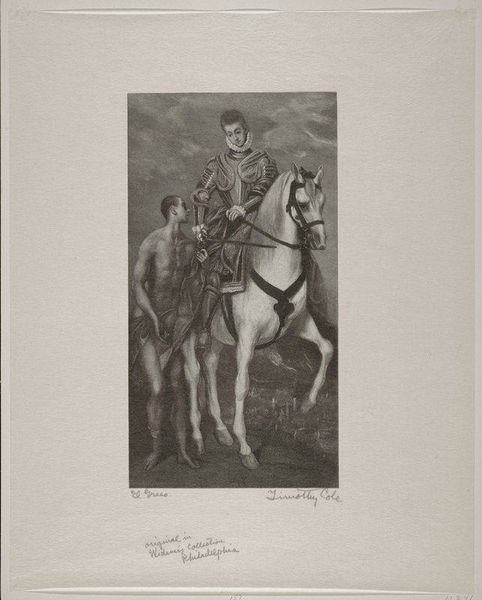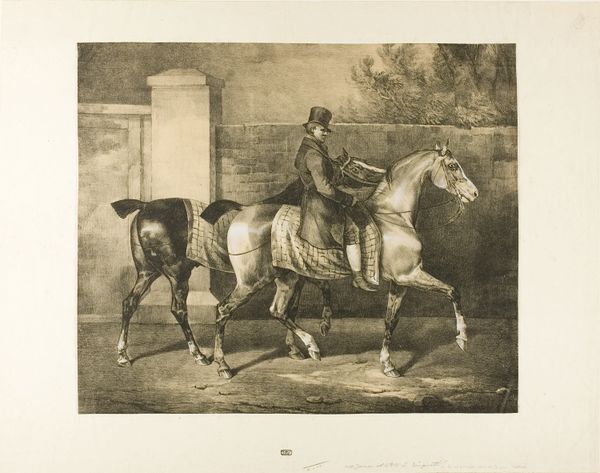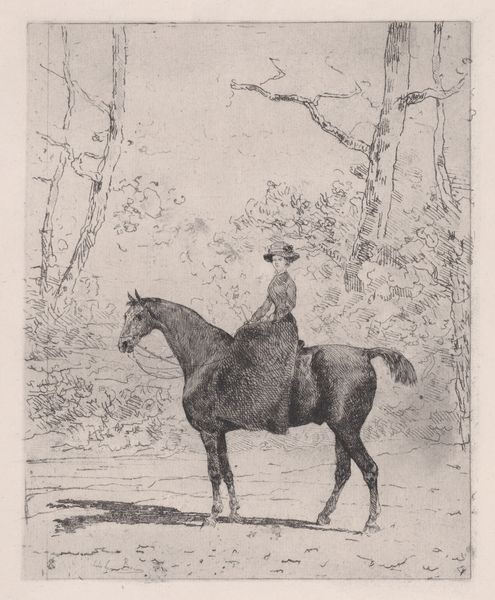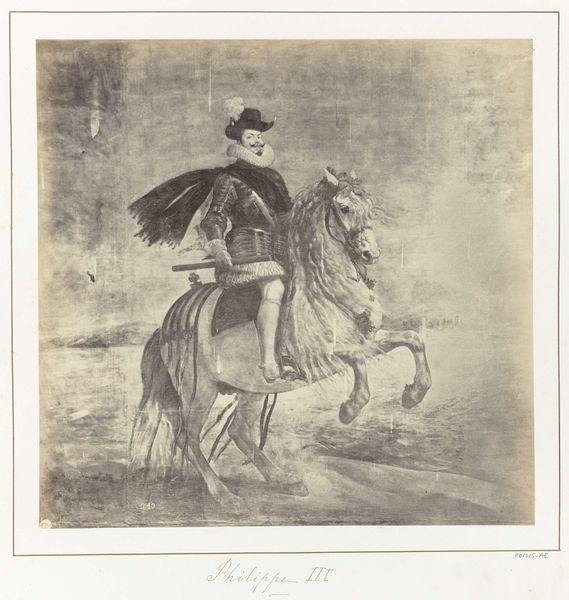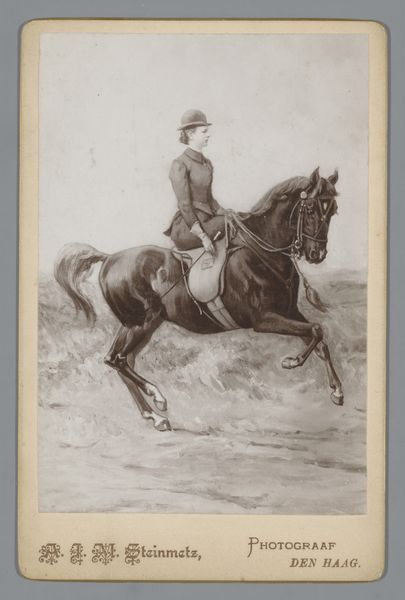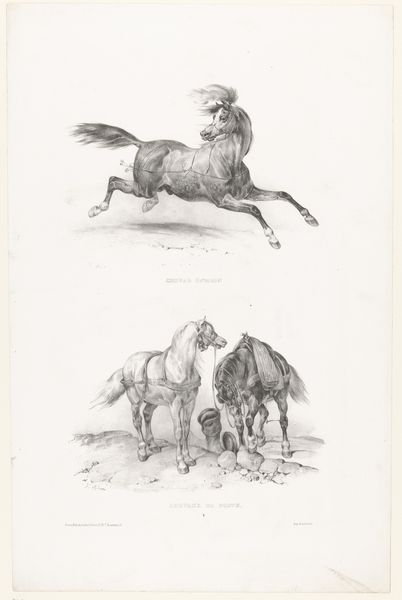
print, paper, photography
#
portrait
#
16_19th-century
# print
#
paper
#
archive photography
#
photography
#
historical photography
#
genre-painting
#
history-painting
#
academic-art
#
realism
Dimensions: 23.9 × 19.3 cm (image/paper); 34 × 26 (mount)
Copyright: Public Domain
Editor: This is "Mac-Mahon," made around 1876 by Goupil & Cie, a print on paper currently residing in The Art Institute of Chicago. I am struck by how... staged it looks, like a historical painting trying to pass itself off as a photograph. What can you tell me about the context around creating and viewing an image like this? Curator: Well, consider the period: France after the Franco-Prussian War and the Paris Commune. Marshal Mac-Mahon was President during the early years of the Third Republic, a time of intense political and social rebuilding but also of deep division and anxieties about national identity. What do you think the choice to portray him on horseback signals to the viewer? Editor: Power, obviously. Military authority. The "man on a horse" is a classic trope. But isn't photography supposed to be about capturing reality? How does this fit with Academic art? Curator: Exactly. This image highlights the constructed nature of national narratives. Goupil & Cie, a prominent art dealership and publisher, mass-produced images like these. The image serves as both portraiture and political propaganda. How does the *mass* production of his image influence its reception? Does it diminish the aura, or does it amplify the message? Editor: I guess it amplifies it, bringing the image of the leader into many homes... though I wonder if it risked making it seem ordinary or less special after a while. Curator: Precisely. It’s a tightrope walk between projecting authority and courting familiarity. These images aimed to solidify a certain vision of France’s leadership and history but were also subject to popular interpretation and, potentially, skepticism. Considering it's a print, distributed widely, how might it differ from a painting hung in a private gallery? Editor: The intended audience shifts, right? And with that shift, so do the intended impact and messaging around French identity, reaching a much larger audience, creating potentially a homogenized French view of its history and identity. Thanks for clarifying the role of imagery as a tool of social and political influence. Curator: A pleasure. And don't forget the influence of the institution itself in perpetuating that message today.
Comments
No comments
Be the first to comment and join the conversation on the ultimate creative platform.


